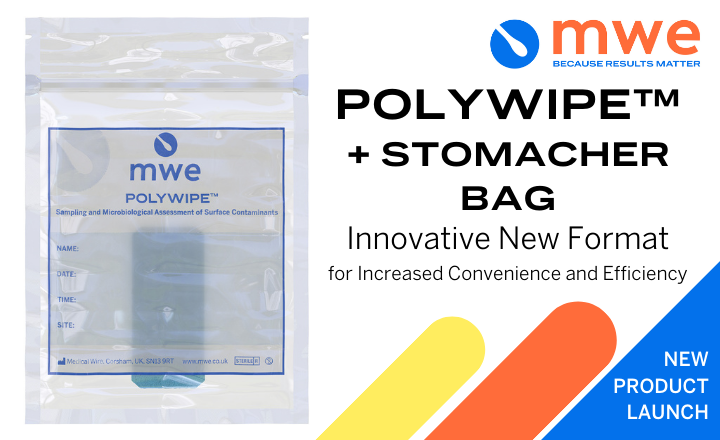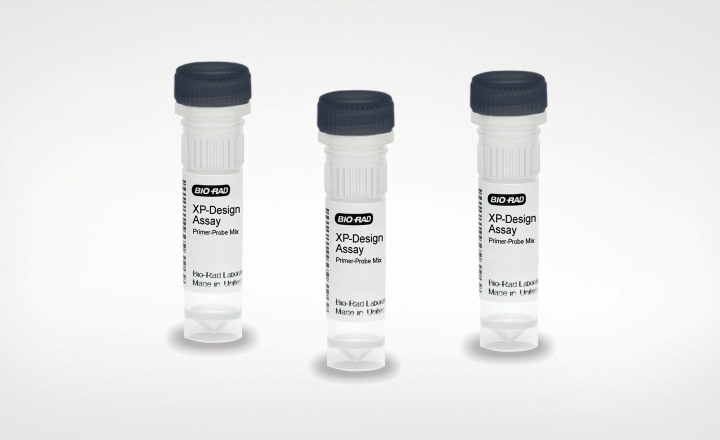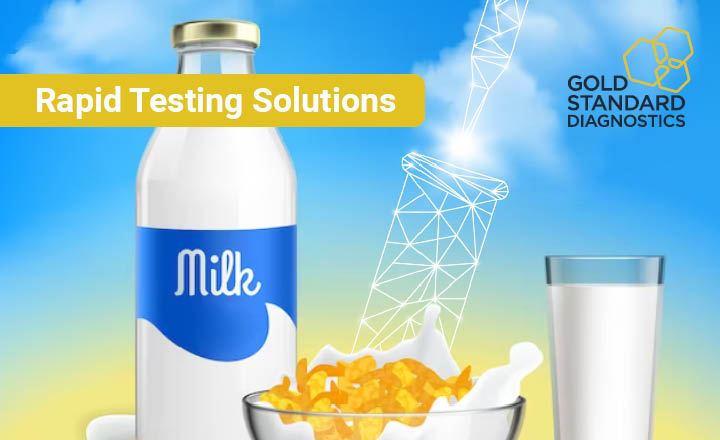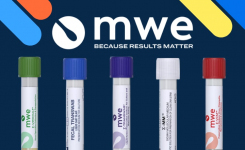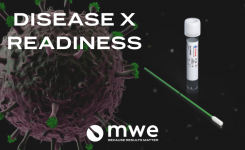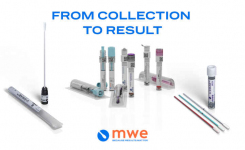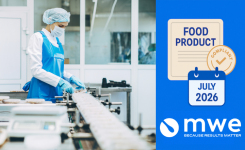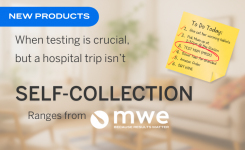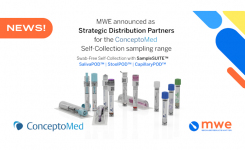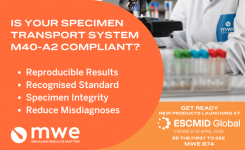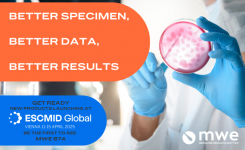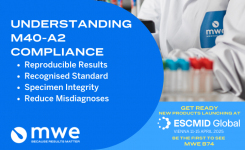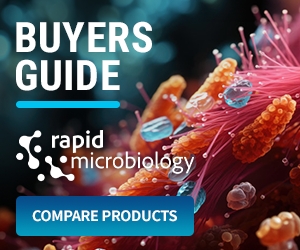Medical Wire & Equipment Co. (Bath) Ltd is pleased to introduce our new POLYWIPE™ format: POLYWIPE™ + Stomacher Bag (Product Code: M451001). The re-designed composition neatly combines our famous POLYWIPE™ sponge swab with a stomacher bag, which is to be used as the glove for holding the sponge when sampling, for your convenience.
Our POLYWIPE™ products are sterile premoistened blue sponge swabs for easy and effective sampling of surfaces for the detection of pathogens such as MRSA and Clostridium difficile. The bright blue colour of the sponge material is highly visible, to ensure easy detection and retrieval, should it be dropped. POLYWIPE™ sponge swabs are manufactured using a special sponge material which contains no inhibitory substances, ensuring maximum recovery and optimum detection of all microorganisms.
The sponge swab (POLYWIPE™) is ergonomically designed for convenient sampling of large, flat, or irregularly shaped surfaces. The malleable POLYWIPE™ sponges are particularly suitable for sampling surfaces such as beds, chairs, floors, monitors, bedside cabinets, and other medical equipment.
MWE’s POLYWIPE™ is premoistened, in a phosphate buffer, and traditionally individually sealed in a peel pouch. In the new format, it is supplied inside a tamper evident, sealed stomacher bag to increase efficiency while collecting specimen samples and processing. The stomacher bag is inverted to become the glove for you to hold the sponge while sampling surfaces. It then becomes the transport bag for sending to the laboratory, where it can be directly processed for analysis. Any antimicrobial substances in the sample are instantaneously diluted to levels well below lethality due to the high quantity of buffer liquid held within the sponge. Other highlights of the new format include:
- Stomacher Bag format reduces packaging for positive environmental impact.
- Quicker delivery of results as the same bag is used for processing the sample in the laboratory i.e. simply add a suitable diluent to the bag and place into a stomacher machine to release the sample for analysis by conventional or molecular techniques.
- Highly visible, bright blue colour to ensure easy detection should the POLYWIPE™ become dislodged from the Stomacher Bag.
- Malleable sponge, suitable for collecting samples from large surfaces, and irregular, hard to reach surfaces, instruments, patient monitors, etc.
- Suitable industries: Environmental, Food, Pharma and Infection Control.
Healthcare Settings
In the global battle on healthcare acquired infections, increasing attention is now on the role of the near patient environment as a reservoir for the responsible pathogens. Stringent cleaning policies are required, but there is also a need to monitor their effectiveness. Bacteria can hide within biofilms that may not be completely removed by cleaning. These can then recover, multiply, and become a source of infection. Pathogenic microorganisms may lurk, not only, on fixed items such as beds or monitors, but on personal equipment such as stethoscopes, name badges and lanyards.
Conventional, commercial sponge materials are not suitable for collection specimen samples as they may contain inhibitory substances such as orthophenylphenol, sulphur, and quaternary ammonium compounds, either by design, or left by the manufacturing process. These can kill or damage any microorganisms picked up and therefore prevent their recovery and detection in the laboratory. During sampling, traces of disinfectant may also be collected with the sample of a cleaned surface and kill any bacteria. Effective sampling will require a means of neutralising trace antibacterial reagents so that any surviving microorganisms remain available for culture testing and analysis. MWE’s POLYWIPE™ sponge swabs neutralise traces of disinfectant by immediately diluting it to sub-lethal concentrations while preserving other microorganisms.
Further POLYWIPE™ Studies
Best, E., et al , 2010, The Potential for Airborne Dispersal of Clostridium difficile from Symptomatic Patients, Clinical Infectious Diseases 2010; 50:1450–1457
Steriopoulis, L., 2014, Is our current cleaning method effective at eradicating Clostridium difficile? ECCMID 2014 Poster P0787
Collins, D., et al 2024, Clostridium difficile contamination of Australian retail vegetables and households. ECCMID 2024 Poster P3381
Enquire now and be the first to use the innovative POLYWIPE™ + Stomacher Bag format. Click here for more information or use the Request Information button below to connect with the company.


